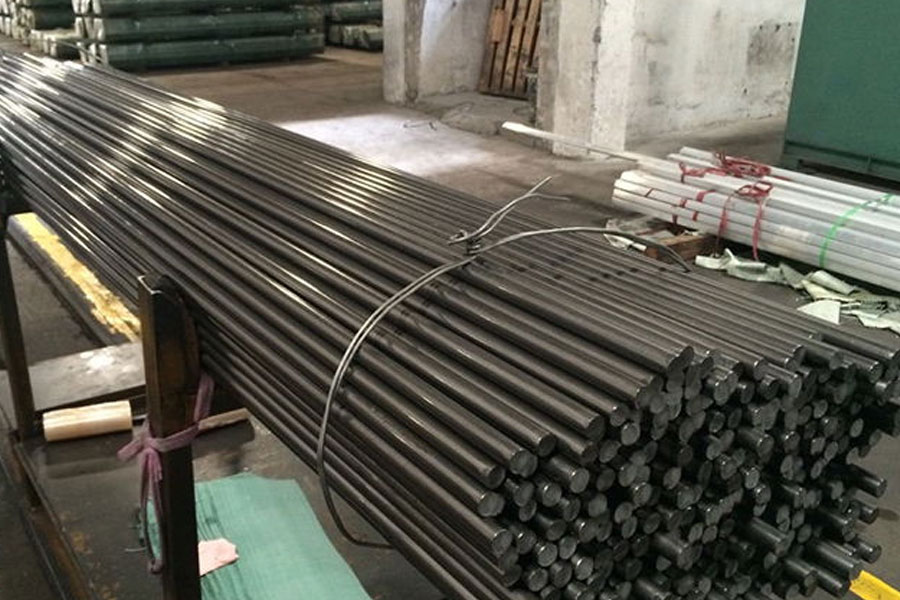- 1-Pull nail
- 2-Tie rod
- 3-Pulley
- 4-Disc spring
- 5-Lock nut
- 6-Adjustment pad
- 7-Spiral spring
- 8-Piston
- 9, 10-Travel switch
- 11-Pulley
- 12-End cover
- 13-Adjustment screw
There is an automatic clamping mechanism for the cutter bar inside the spindle, which is composed of the tie rod 2 and the four steel balls of the head, the disc spring 4, the piston rod 8 and the coil spring 7. There is no oil pressure on the upper end of the piston 8 during clamping, and the spring 7 moves the piston 8 upward to the position shown in the figure. The disc spring 4 moves the pull rod 2 up to the position shown in the figure, and the steel ball enters into the annular groove of the pull pin 1 at the tail of the knife rod to tighten the knife rod. When it is relaxed, the hydraulic pressure moves the piston 8 down and the push-pull rod 2 moves down. The steel ball enters the annular groove on the upper part of the cone hole behind the main shaft, and releases the cutter bar. When the manipulator pulls the cutter bar from the main shaft, the compressed air passes through the middle holes of the piston and the draw rod, and blows out the main shaft cone hole.
The travel switches 9 and 10 are used to signal clamping and loosening of the arbor.
The arbor clamping mechanism is clamped by spring and hydraulic pressure, and the hydraulic pressure is loosened to ensure that the arbor will not be loosened when the power fails. There is a certain gap (about 4mm) between the piston 8 and the upper end of the draw rod 2 during clamping to prevent the end face from rubbing when the spindle rotates.
The machine tool uses a taper shank tool. A pull pin 1 is installed at the tail end of the taper part, and a pull rod 2 pulls the groove of the pull pin 1 through four 5 / 16in steel balls to position and clamp the tool in the spindle taper hole. The tension force is generated by the disc spring 4. There are 34 pairs of 68 disc springs. The tensioning force of the tensioning tool is equal to 10kN, the maximum is 13kN.
During the tool change, the stroke of the piston 8 is 12 mm. After advancing about 4mm, it began to push the lever 2 until the steel ball entered the Φ37mm ring groove on the upper part of the spindle taper hole. At this time, the steel ball can no longer restrain the head of the nail. The drawbar continues to descend, and the a side of the drawbar contacts the top of the pull nail, pushing the tool out of the spindle taper hole. The travel switch 10 sends a signal, and the manipulator can take out the tool.
Grinding the adjusting block 6 can ensure that when the stroke of the piston reaches the end point, the a-face of the rod contacts the top of the pull nail.
The piston 8 pushes the lever to push the cutter, so the maximum thrust of the piston should be equal to 13kN plus the spring force of the spring 7
The contact stress between the four steel balls and the taper cone surface, the surface of the spindle hole, and the hole where the steel ball is located is quite large, so the material and surface hardness of these parts are very demanding. The holes where the 4 steel balls are located should be in the same plane, in order to ensure the consistency of the stress of the steel balls.
